In this blog post, we’ll delve into the successful development of a real-time bear detection system, achieved through collaboration with the NGO HackThePlanet. Our initiative aims to safeguard Romanian farms by deterring bear encroachments.
Implementing non-invasive methods to deter bears from approaching farms and livestock holds promise in fostering harmonious relations between humans and bears.
For a comprehensive understanding of this project, please click on the pipeline overview below:

Project Scope
The computer vision model responsible for detecting bears will operate on a low-power microcontroller (such as the Raspberry Pi5). This necessitates swift operation and minimal power consumption during inference. Ensuring timely detection of approaching bears is critical, as their entry onto farms can result in predation on livestock, such as pigs. Achieving an extremely high recall rate is imperative to prevent such incidents. Additionally, since brown bear activities can occur day or night, the system must remain operational around the clock.
 Gallery / Raspberry Pi5 - Low Power device
Gallery / Raspberry Pi5 - Low Power device
Maintaining a low false positive rate is essential for two key reasons: Firstly, to uphold trust among farmers who rely on the system daily, it must avoid triggering unnecessarily. Secondly, to prevent excessive power consumption when activating the bear deterrent component, false positives must be minimized.
Provided Dataset
We have amassed a collection of camera trap images captured over the past years from forests near the farms in Romania.
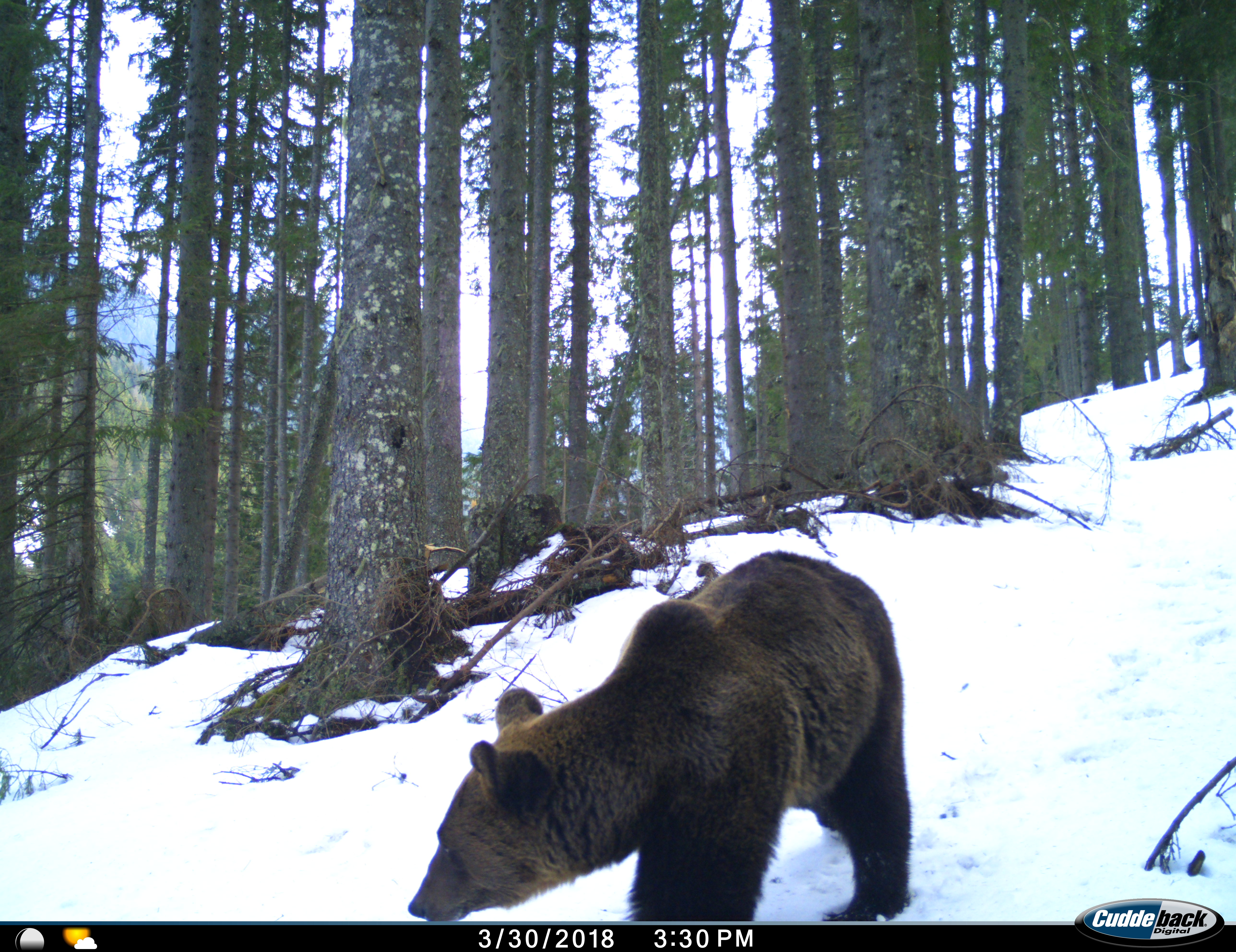

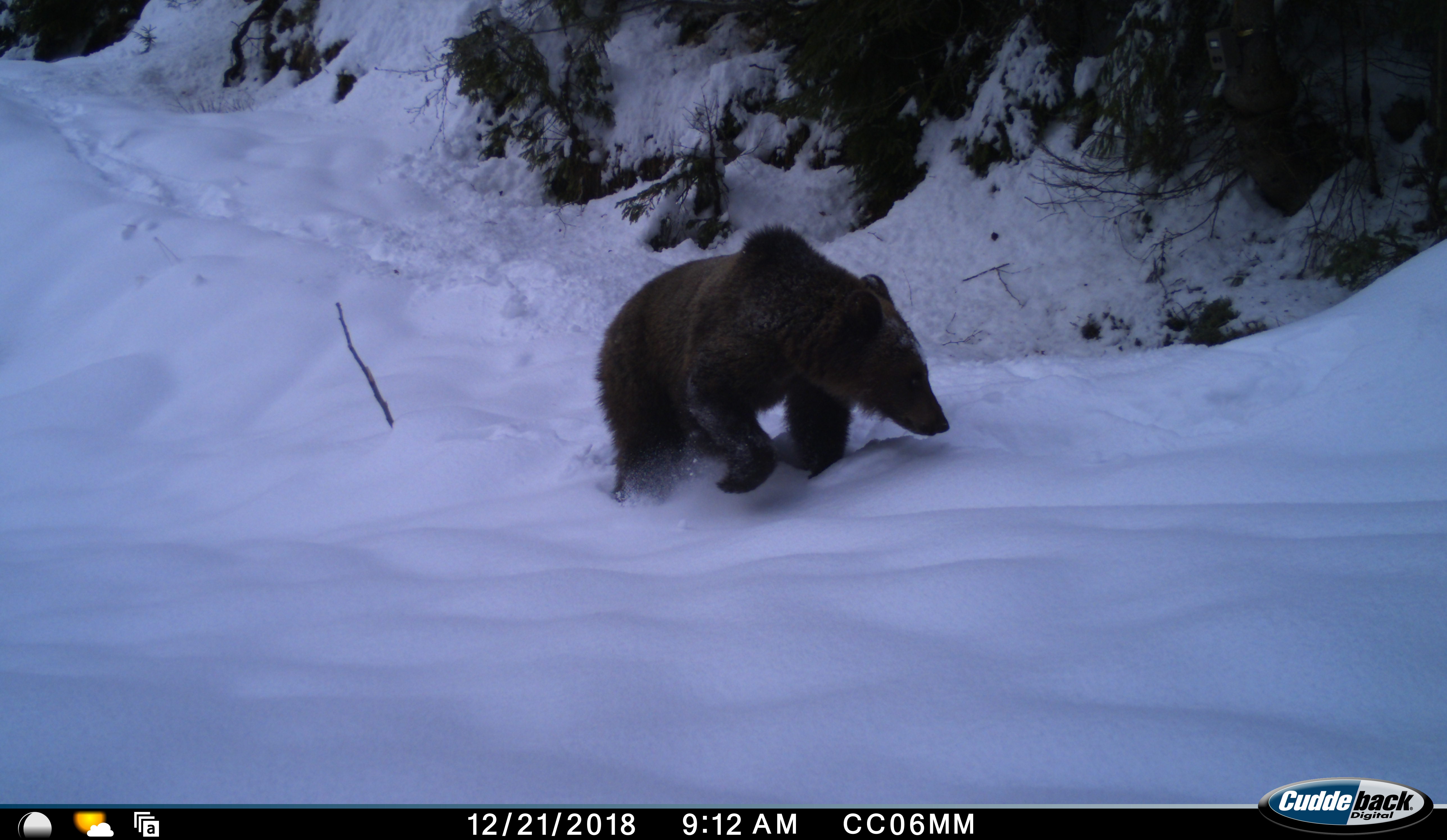
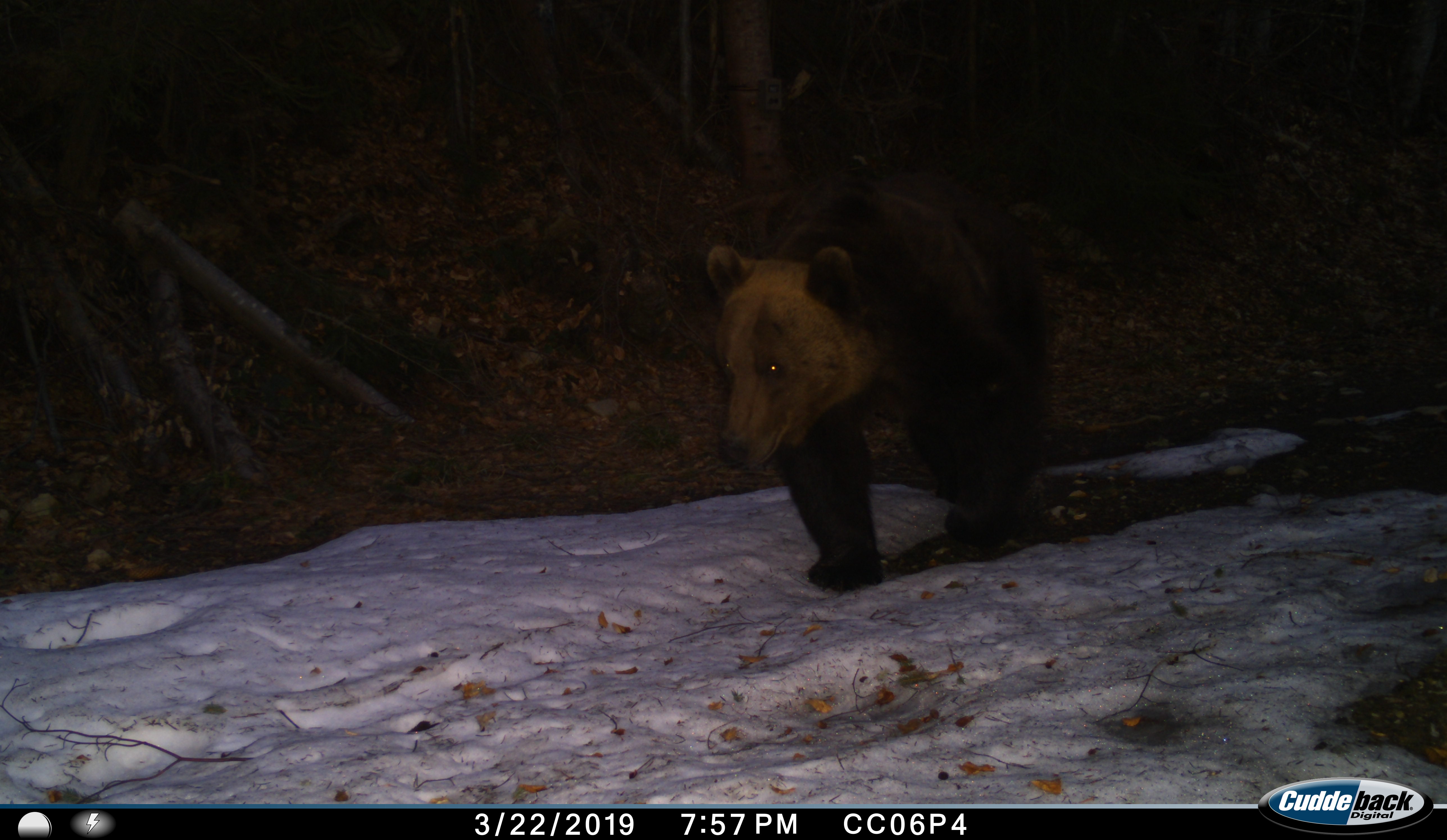
Camera Traps
The advent of camera traps has transformed wildlife observation and research, enabling unprecedented insights into behavioral ecology and facilitating citizen science census projects. These non-invasive monitoring tools offer the advantage of data collection without human presence, minimizing stress on the observed individuals. From the Arctic tundra to tropical rainforests, camera traps have proven versatile, facilitating the study of a diverse range of species. Initially designed for game scouting, camera traps have evolved significantly to become indispensable tools for wildlife research, driving advancements in design, functionality, and affordability.
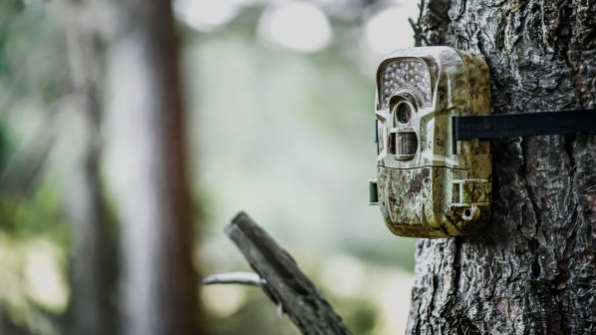
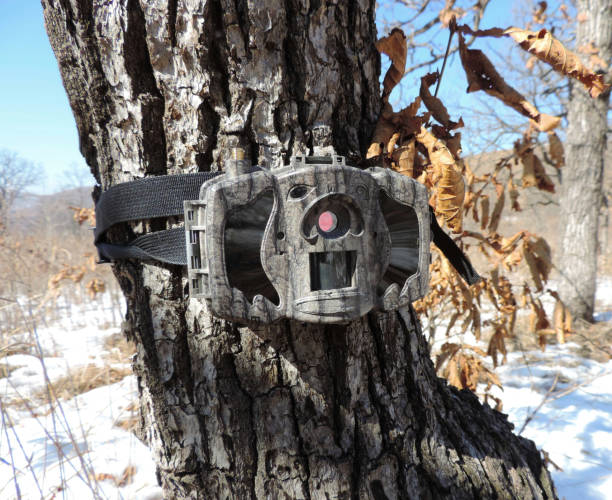
Exploratory Data Analysis
Exploratory Data Analysis (EDA) is an approach to analyzing datasets to summarize their main characteristics, often employing visual methods. The primary goal of EDA is to uncover patterns, relationships, and anomalies in the data, which can then inform subsequent analysis or modeling tasks.
EDA typically involves the following steps:
- Data Collection: Gathering the relevant dataset(s) from various sources.
- Data Cleaning: Identifying and handling missing values, outliers, and inconsistencies in the data.
- Summary Statistics: Computing descriptive statistics such as mean, median, mode, standard deviation, etc., to understand the central tendencies and variability of the data.
- Data Visualization: Creating visual representations of the data using plots, charts, histograms, scatter plots, etc., to explore patterns, distributions, correlations, and trends within the data.
- Exploratory Modeling: Building simple models or using statistical techniques to further understand relationships within the data.
- Hypothesis Testing: Formulating and testing hypotheses about the data to validate assumptions or gain insights.
- Iterative Analysis: Iteratively exploring the data, refining analysis techniques, and generating new hypotheses as insights emerge.
EDA is a crucial initial step in any data analysis or modeling project as it helps analysts gain a deeper understanding of the dataset, identify potential challenges or biases, and inform subsequent analytical decisions. It provides a foundation for more advanced analyses, such as predictive modeling, hypothesis testing, or machine learning, by guiding feature selection, model building, and evaluation strategies.
Data quality issues
This section outlines various data quality issues identified during the Exploratory Data Analysis (EDA) process.
Bursts of Images
Camera traps consist of a camera and a motion sensor. Upon detecting movement, the camera begins recording the scene, often resulting in numerous video frames capturing the same animal in a similar pose. It’s crucial to ensure that these bursts of images are properly handled during data splitting. Failure to do so can result in train/test data leakage, potentially causing the model to inaccurately overreport its performance.




Corrupted Images
We encountered numerous camera trap pictures that were corrupted and couldn’t be loaded properly. As data is fundamental to constructing a robust machine learning system, it was disheartening to have to discard a significant portion of it due to the inability to recover these corrupted images.
Class Imbalance
The dataset was heavily skewed towards bear images, with a prevalence approximately five times higher than that of images featuring other animals or empty frames.
When dealing with imbalanced datasets in machine learning, where one class is significantly more prevalent than the others, it can lead to biased models that perform poorly on minority classes.
Resampling Techniques
- Oversampling: Increase the number of instances in the minority class by duplicating or generating new instances.
- Undersampling: Decrease the number of instances in the majority class by randomly removing instances. This can help balance the class distribution.
Data Augmentation
Augment the minority class by introducing small variations or perturbations to the existing data, similar to techniques used in image processing.
 Data Augmentation / TenCrop - Generate 10 images from one to mitigate the class imbalance
Data Augmentation / TenCrop - Generate 10 images from one to mitigate the class imbalance
We conducted thorough testing and evaluation of common resampling and data augmentation methods. In our experiments, we observed that data augmentation yielded particularly effective results when applied to empty frames and images featuring other animals. This approach allowed us to maintain a high number of bear images while introducing subtle variations into the dataset.
Data Annotation
To annotate our dataset, we evaluated two machine learning models: MegaDetector and GroundingDINO. In our decision to train an object detector, the annotation process for each image captured by the camera traps should include generating bounding boxes that outline the location of each detected bear: (x, y, width, height).
Both models successfully identified bears in camera trap images, but GroundingDINO, when prompted with the text “bear,” exhibited higher accuracy. GroundingDINO also produced fewer false positives and false negatives. Consequently, we opted to utilize GroundingDINO to generate the dataset.

Note: MegaDetector and GroundingDINO, while effective for object detection and image understanding, are not suitable for low-power, real-time applications due to their large size and high computational requirements. However, we can leverage these existing models to curate the dataset used for training our machine learning model.
MegaDetector
MegaDetector is a deep learning-based object detection model developed by Microsoft AI for Earth. It is specifically designed for detecting animals in camera trap images, including rare or previously unseen species. MegaDetector employs state-of-the-art convolutional neural networks (CNNs) to automatically identify and localize animals within images, facilitating large-scale wildlife monitoring and conservation efforts.

GroundingDINO
 GroundingDINO is a multimodal framework that combines Vision
Transformers (ViTs) with language grounding for image-text matching tasks. It
leverages the power of transformer-based models for both image and text
modalities, enabling efficient processing of visual and textual information. By
grounding textual descriptions with visual features, GroundingDINO achieves
improved performance in tasks such as image retrieval and cross-modal
understanding.
GroundingDINO is a multimodal framework that combines Vision
Transformers (ViTs) with language grounding for image-text matching tasks. It
leverages the power of transformer-based models for both image and text
modalities, enabling efficient processing of visual and textual information. By
grounding textual descriptions with visual features, GroundingDINO achieves
improved performance in tasks such as image retrieval and cross-modal
understanding.
Data Modeling
Data split
The annotated dataset has been divided into three sets: train, validation, and test, with the following ratios: 80%, 10%, and 10%, respectively. To prevent any potential data leakage between training and testing phases, we partitioned the data based on camera reference and date information extracted from the picture’s exif metadata
Image Classification vs Object Detection
How might we approach modeling this dataset? One option is to conceptualize the problem as a binary image classification task, where the goal is to predict whether an image contains a bear or not. Alternatively, it could be formulated as an object detection task, aiming to predict bounding boxes that delineate the location of any detected bears within the image.


Both approaches have their advantages and drawbacks. Initially, when we opted for the straightforward image classification task to model the dataset, we encountered an issue: The model learned to rely on recurring image backgrounds captured by the fixed camera traps to make predictions. This tendency could potentially hinder generalization when deploying the system. However, framing the problem as an object detection task resulted in improved performance.
YOLOv8
Overview
We opted to utilize a pretrained YOLOv8 model and fine-tune it for our specific object detection task. Renowned for its speed, accuracy, and user-friendly interface, YOLOv8 stands out as an ideal solution for various tasks, including object detection, tracking, instance segmentation, image classification, and pose estimation.
 YOLOv8 Computer Vision Tasks
YOLOv8 Computer Vision Tasks
Model size
As we aim to deploy our solution on a low-power microcontroller, we selected
the most compact variant of YOLOv8, known as the 'nano' version or 'YOLOv8n'.
The table below illustrates the tradeoff between model size (a proxy for
accuracy) and processing speed.
| Model | size (pixels) |
mAPval 50-95 |
Speed CPU ONNX (ms) |
Speed A100 TensorRT (ms) |
params (M) |
FLOPs (B) |
|---|---|---|---|---|---|---|
| YOLOv8n | 640 | 18.4 | 142.4 | 1.21 | 3.5 | 10.5 |
| YOLOv8s | 640 | 27.7 | 183.1 | 1.40 | 11.4 | 29.7 |
| YOLOv8m | 640 | 33.6 | 408.5 | 2.26 | 26.2 | 80.6 |
| YOLOv8l | 640 | 34.9 | 596.9 | 2.43 | 44.1 | 167.4 |
| YOLOv8x | 640 | 36.3 | 860.6 | 3.56 | 68.7 | 260.6 |
Training
We conducted training over 200 epochs on the training set, with continuous monitoring of model performance using mean Intersection over Union (IoU), Box Precision, and Box Recall as primary metrics, utilizing the validation set. To enhance model robustness and generalization, we employed various common data augmentation techniques, including random horizontal flipping, random cropping, mosaic image aggregation, rotation, color filtering, among others.
 Data augmentation during training - Mosaic, rotation, etc
Data augmentation during training - Mosaic, rotation, etc
Throughout the training process, these metrics were continuously evaluated on both the training and validation sets.

Evaluation
The evaluation is conducted on the test set, and the performance is reported using a confusion matrix. In this evaluation, the model acts as a binary classifier: if the probability of a bear being localized exceeds a specific threshold, the image is classified as containing a bear.
 Confusion Matrix Normalized - imgsz 1024
Confusion Matrix Normalized - imgsz 1024
Inference Speed vs Model Accuracy
The real-time requirement of this system necessitates careful consideration of the tradeoff between inference speed and model accuracy. Opting for a larger model operating on a full image frame of the video feed can deliver superior accuracy but at the expense of slower processing speed. Evaluating this tradeoff was crucial in selecting the most suitable model for the task.
 Inference speed and model accuracy tradeoff on the Raspberry Pi 5
Inference speed and model accuracy tradeoff on the Raspberry Pi 5
Conclusion
This guide has outlined the methodology employed to construct an advanced Machine Learning model for real-time bear detection. The Exploratory Data Analysis phase meticulously addressed various data quality concerns within the dataset and examined multiple modeling strategies. Utilizing GroundingDINO proved instrumental in swiftly annotating the camera trap images. Furthermore, we underscored the significance of striking a balance between speed and accuracy when selecting a model suitable for deployment on low-power devices.
Notably, this framework possesses the potential to transcend bear management, offering promising avenues for mitigating human-wildlife conflicts across a spectrum of species.
One can try out the model from the ML Space or directly from the snippet below:





